7 Major Ports in Russia
As the largest of all the landmasses in the entire world, Russia has an extensive coastline. It features on the periphery of the Arctic Ocean surrounding its entire North for trading prospects. The Barents Sea, with the South-Eastern side touching the Sea of Japan encompasses the major ports in Russia.
60% of the total cargo movement on the international scale for Russia takes place through the sea. This includes almost 722 million MT (2016) cargo movement through international vessel calls.
A staggering 67 thousand plus ship calls come through this busy network every year. However, the modern handling facilities ensure that the median handling time for these ships remains 1.45 days. This means the port facilities under the Russian Government’s reach are the best in the business!
As a shipping nation, the Russian seafarers are plenty in number across the globe. The country’s shipping strength boasts over 2820 vessel registrations and 98,000 seafarers under them.
Major Ports Of Russia
In this article, we review the major ports in Russia of inland and international importance. We highlight their share in building the 571 496 million current US$ shipping market in the country. The details also contain their accurate location, identity code, and other geographical information.
1. Port of Novorossiysk (Krasnodar Krai, Russia)
UN/Locode: RUNVS
Latitude: 44.720065°
Longitude: 37.81373°
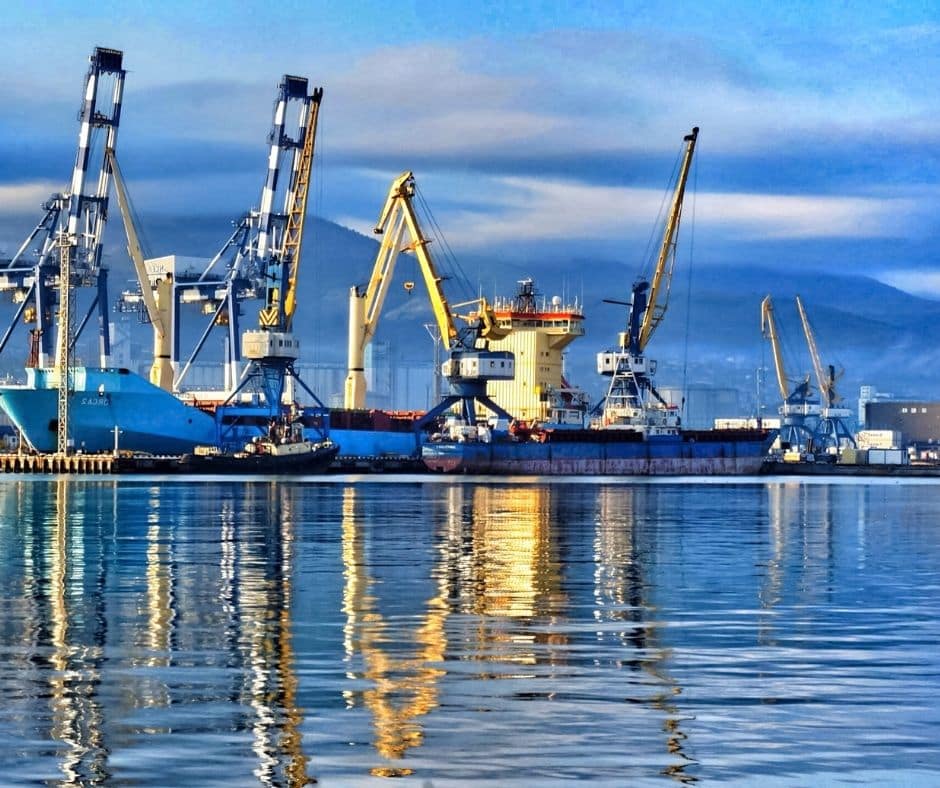
The port of Novorossiysk has a 3.4 sq. km harbour area with a land area worth 2.7 sq. km. This includes a total of 89 functioning berths for vessels of all sizes. It features as the biggest seagoing port for Russia for over decades with almost 50% higher turnover.
The establishment of the port of Novorossiysk dates back to 1829, with major exchanges since 1846. The port’s range of services recorded 143 million MT of cargo handling for 2020. It includes one of the first Timber wood handling facilities to feature across the Black Sea ports.
Cargo Handling
A total of 11 berths are important in handling timber and other bulk cargo. 4 separate berths over a quay length of 570 meters handle the container operations. The sheer size of the facility allows maximum handling limits of 208 million MT every year.
Network and Layout
The timber operations across the 4 berths (31, 32, 31/A, 31/5) are the most advanced facility across Europe. Their throughput every year crosses figures between 400 thousand to 600 thousand.
This connects with direct railway and loading facilities, reaching out to 70% of timber industries. Meanwhile, 180 thousand and more TEU capacity of container handling adds to the port’s large-scale profits.
2. Port of Saint Petersburg (St. Petersburg, Russia)
UN/Locode: RULED
Latitude: 59.91933°
Longitude: 30.327035°
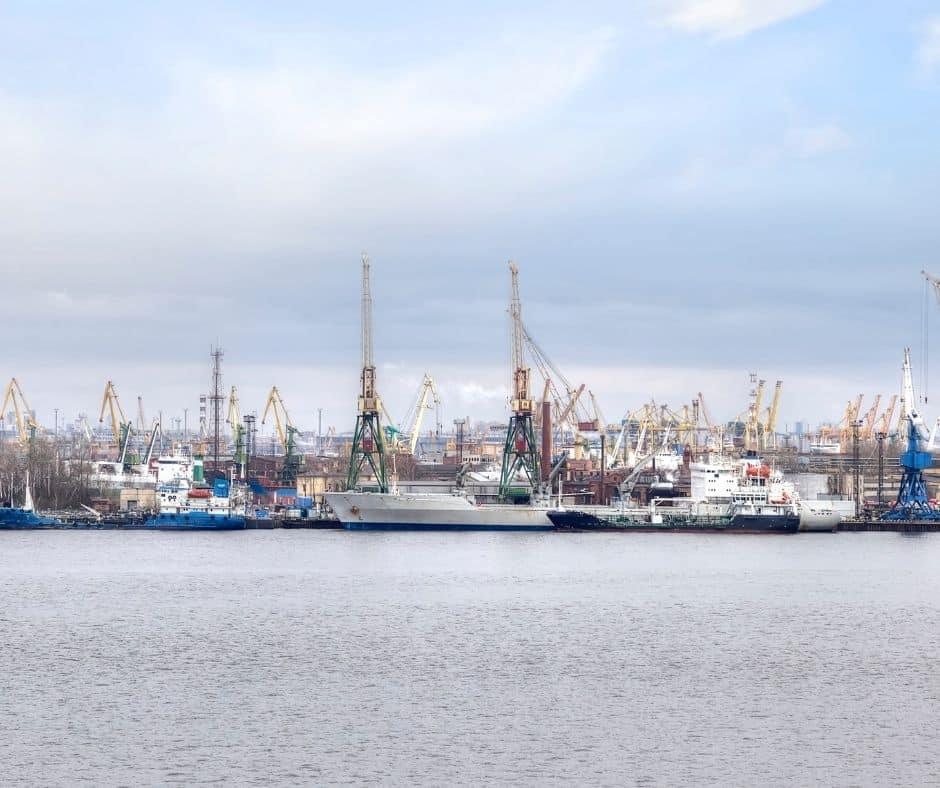
The Port of Saint Petersburg has one of the deepest drafts for any Russian facility. The inner anchorage ranges between 23 to 25 meters while the channel draft is approx. 18.5 to 23 meters.
As one of the major ports in Russia, its water area spreads over an expanse of 164 sq. km. Meanwhile, the beginning of its establishment dates back to 1869. At present, the facility uses 470 vessels for in-house operations along their coast.
The passenger terminal at St. Petersburg handles over 450 vessels annually. This happens over a dozen of berths, with 2 major terminals having the alongside the extent of 360 meters.
Cargo Handling
The total mooring size capacity of this facility is over 30 kilometres. This includes the working capacity of more than 200 berths of various sizes in this facility.
St. Petersburg famously works with 8 major cranes of Panamax capacity. This couples with 3 RMG and 20 gantry nature cranes for handling container goods. This rounds off to the port’s annual handling figures to well over 2 million every year.
Network and Layout
The facility connects with major cargo shipping destinations through 2 dozen operating lines. It acts as the major gateway for providing shipping access to the Russian interiors. The neighbouring ports like Rotterdam, Bremerhaven, etc. act as the feeder terminals for the super container ships.
Over 122 tugs and 3 dozen oil barges are resident for berthing and bunkering operations. The rail line operates through the container segment of the port, handling container transport.
3. Port of Ust-Luga (Kingiseppsky District, Russia)
UN/Locode: RUULU
Latitude: 59.68294°
Longitude: 28.329515°
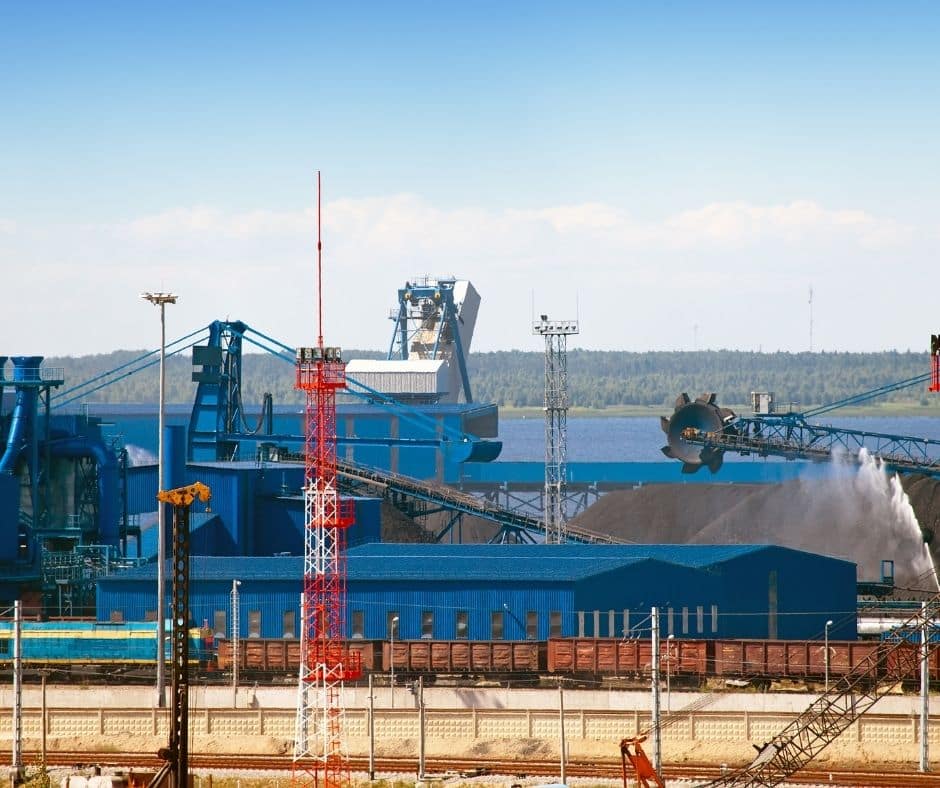
The port of Ust-Luga stands only behind Novorossiysk in terms of cargo handling volume for 2020. It has the biggest handling facility for coal bulk operations in the Northern part of Russia. The additional expansion plans provide this facility with a total area of 30 sq. km.
Ust-Luga has 5 major berths that operate for round the year operation in severe temperatures. These handle over 30 vessels at once with anchorage facilities over 20 meters and higher depth.
The state-of-art coal loading facilities handle export abilities up to 20 million MT annually. It also is one of the newest facilities in Russia, dating back to 2011 for its establishment.
Cargo Handling
The loading conveyors for the coal handle up to 500 MT every hour on average. This facility accommodates vessels ranging up to 60,000MT of DWT for coal loading.
In addition, Ust-Luga also handles livestock, liquid, and general cargo operations. The overall cargo operations have figures worth 102.6 million MT for 2020. 2 mega cranes of 104 MT capacity and 1 of 80 MT capacity operate simultaneously with the conveyor system.
Network and Layout
The berthing network contains a ramp bridge terminal and 7 deep berths spread across 1500 meters. Their operations handle 1000 to 1450 vessels up to 1,20,000 MT DWT.
The layout also has a warehouse for final goods handling, spread over 2800 sq. meters. This facility connects with the Ust-Luga railway terminal that has a special station for the port. The plan is for expanding the facility for over 26 train arrivals every day in the next decade.
4. Port of Vostochny (Nakhodka Bay, Russia)
UN/Locode: RUVYP
Latitude: 42.762495°
Longitude: 133.0514°
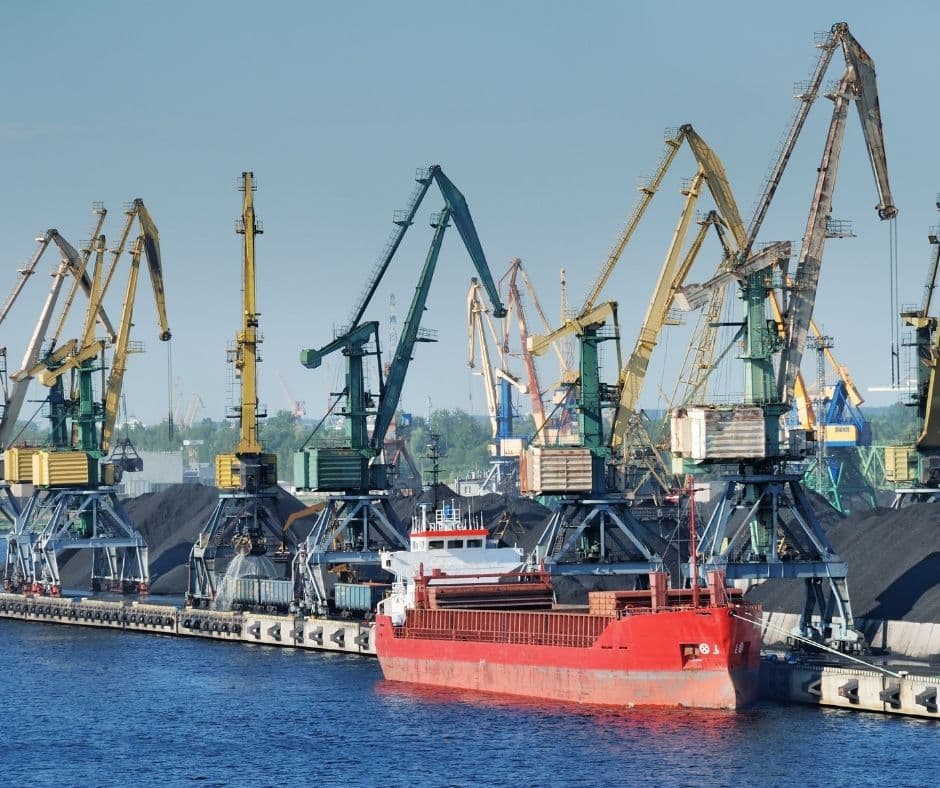
The port of Vostochny operates with two major terminals for a handling capacity of 80 million MT. In 2020, the facility shows stats worth 77 million MT including the export. In the internodal structure, the coal loading takes place at the special coal terminal.
The facility is amongst the oldest in the major ports in Russia, dating back to 1974. The trans-Siberian railway connects the terminal to the most prominent end-user plants. Vostochny’s major exports connect with the Asian countries, with Japan and Korea using up to 60%.
Cargo Handling
Over 550 vessel arrivals for the year 2019 have mostly bulk carriers of different sizes. The facility accommodates vessels up to 1,80,000 MT DWT for bulk coal operations.
The general handling facilities show 300,000 units of rail cars carrying the cargo for this period. The discharge to these rails uses the conveyor mechanism with automatic operations.
Network and Layout
The Vostochny terminal employs over 1700 people for the cargo and operational routines. The spreading layout uses 98% of mechanical and electrical automation for operations.
With the progressive development of their phase 3, the handling capacities will touch over 100 million MT. As a result, the net income of the facility amounts to an annual figure of 125 million USD.
5. Port of Primorsk (Vyborgsky District, Russia)
UN/Locode: RUPRI
Latitude: 60.3463°
Longitude: 28.67096°
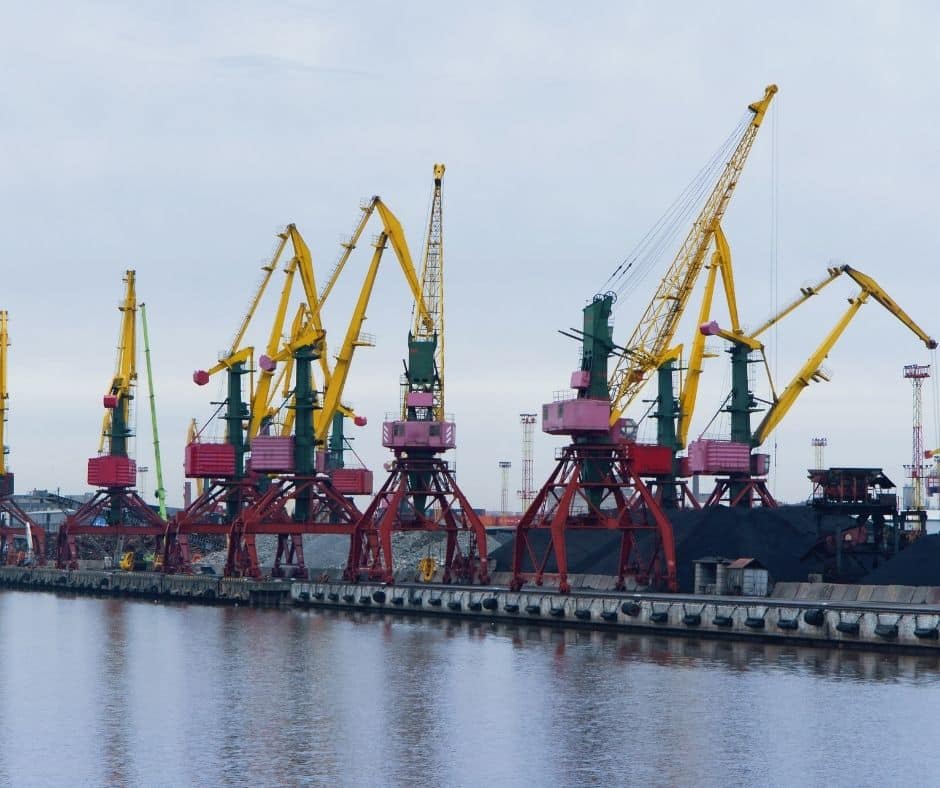
The Port of Primorsk is spread across a land piece of 5.4 sq. km area for cargo operation. This is in addition to the 32 sq. km of water limits within their expanse. It features amongst the top Russian ports by volume, handling 50 million MT+ cargo annually.
The initial operations at the facility date back to the year 2001, with a further increase in 2004. The facility operates 6 major berths that spread across a length of 2.8 km alongside. The deepest tanker-handling terminals allow drafts up to 17.8 meters for convenient loading.
Cargo Handling
An annual handling capacity of 60 million MT and more of liquid cargo allows major export relations. The Primorsk port also stands out as the highest contributor to oil exports in Russia.
The operations include 50 major oil extraction firms for direct loading transfers. All loading arms connect for a throughput of 2800 cubic meters loading rate for bigger tankers. This allows tankers of 1,50,000 DWT capacity to arrive with better draft features.
Network and Layout
The wide oil handling range connects with the Baltic Pipeline and serves at its one end. This comes with a specific terminal for gas loading operations that operates 8-24hrs for cargo.
The 2 phases of pipeline extending onwards span over 1000 kilometres for oil handling. These terminals involve 250 regular employees with camera surveillance measures.
6. Port of Murmansk (Kola Bay, Russia)
UN/Locode: RUMMK
Latitude: 68.984125°
Longitude: 33.061°
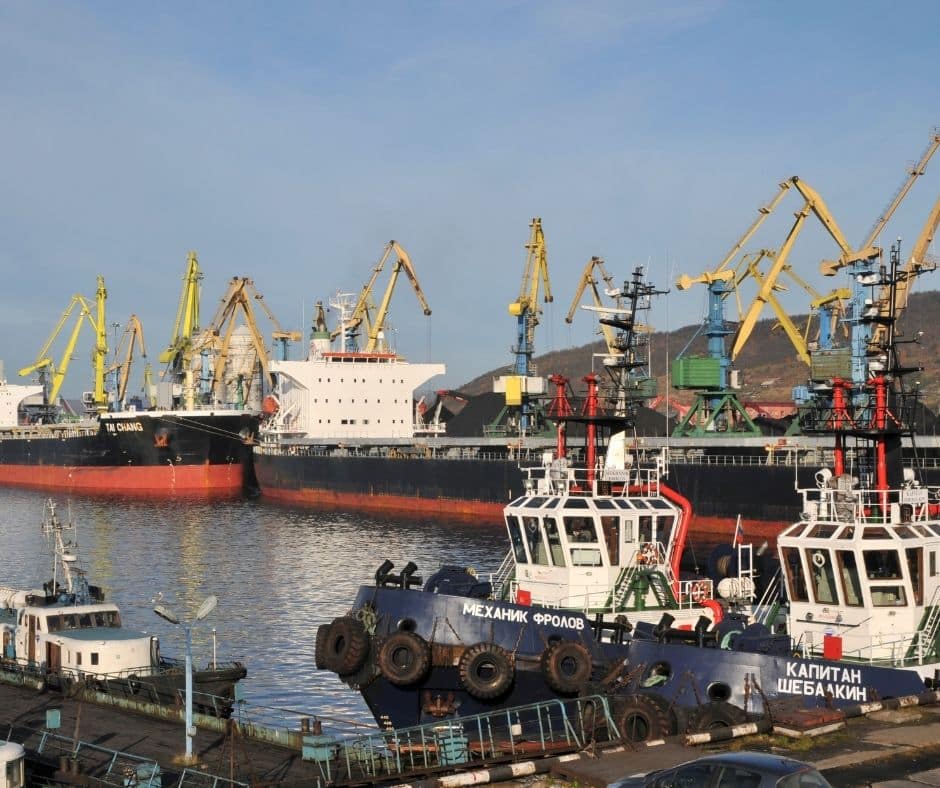
With its location on the northern end of the Arctic circle, Murmansk is the coldest Russian port. It also is the largest to lie on the North of this geography. It is also the geographical North-most amongst the major ports in Russia.
The port helps to house the ice-breaking vessels assisting the larger vessels passing through the Arctic. Its establishment owing to this reason is also quite old, dating back to 1917.
The port operates through its 15 berths, 11 of which are for solid cargo. These berths divide into 2 major port districts or nodes for operation. The general berths operate over 1.5 km in length, while the oil terminals operate on half the figure.
Cargo Handling
In 2021, Murmansk has figures worth 56 million MT of cargo through its facility. All major bulk cargo operations take place through the gantries at a steady rate. The operates to switch between 16 and 32 MT per hour operation capacity for these.
Meanwhile, the bulk liquid berths vary between 10 to 15 meters in depth. The 3 terminals that use the roadways facility operate the majority of bulk operations.
Network and Layout
Despite its challenging location, Murmansk operates round the year. Its expanse has an additional third node for car and container handling tasks. It is the only node with length restrictions, with vessels coming up to 220 meters long.
Major bulk cargo storage facility houses more than 25000 MT in this area. The facility houses over 200 operators for cargo, and less than 100 for ice-breaking requirements.
7. Port of Vladivostok (Vladivostok, Russia)
UN/Locode: RUVVO
Latitude: 43.087445°
Longitude: 131.9022°
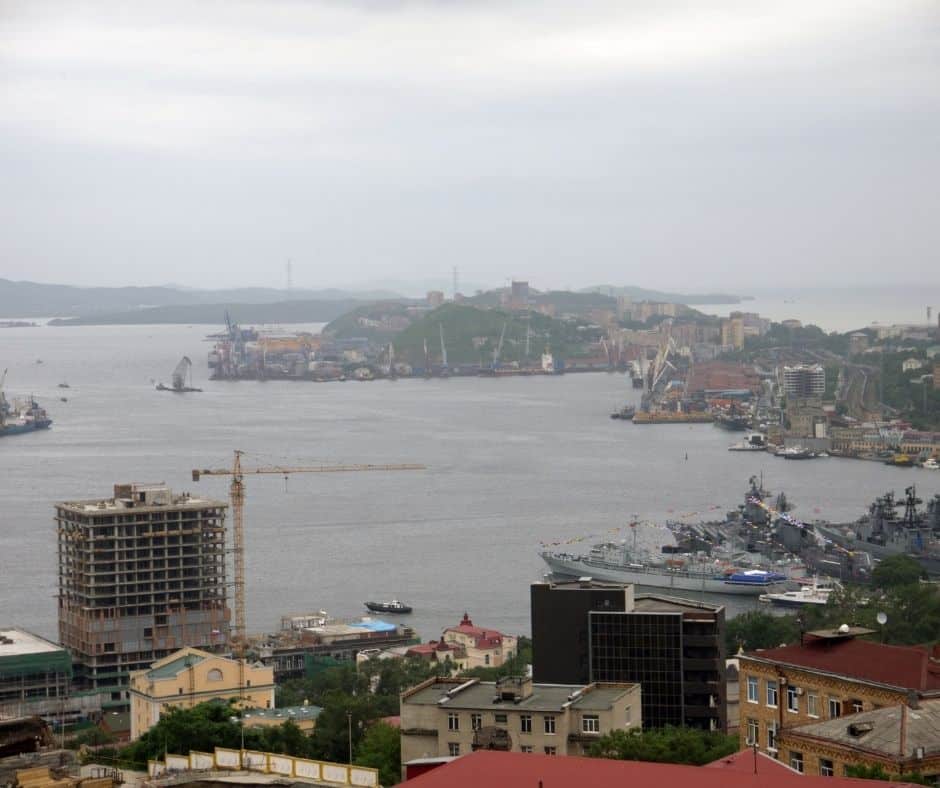
The port of Vladivostok provides Russia with an opportunity to explore the Pacific. It extends towards the south-eastern end and touches the Sea of Japan for the bulk Asian traffic. This facility spreads across 55 hectares and also provides a cultural significance for the Russian landmass.
Vladivostok has a record of handling 24 million MT of cargo for 2021. It is significantly higher than its 13.9 million MT average across the decade. The port’s establishment starts in the 1800s, with free status existence in between.
Cargo Handling
The terminal operates through its range of 15 berths for general operations. Each of these varies between 10 to 15 meters for depth. The approach through the channel gives a depth of up to 25 meters.
A collection of 200 automatic and semi-automatic loading resources are available overall. This includes the STS, RMG, and RTG facilities operating alongside. The container handling facilities operate round the year for efficient discharging.
Network and Layout
Being the south-eastern tip, the Vladivostok network has major relation with Asian ports. 45% and more of their trade flow through Korea, Japan, and China in combination. The layout divides into the universal and the container-specific terminals for operation.
An area of 450,000 sq. meters is available for the warehouse storage and handling of goods. The inter-port handling facilities feature a train map and 2 major truck checkpoints.
Russian Shipping Riches
The sea transport shares a stake worth 112 087 million current USD for the Russian trade. This creates a significant impact for managing international trade, despite the large land area. The concentration of land does not have too big inland waterways, leading to major ocean ports.
Moreover, the testing conditions while operating in the Arctic do not make the cargo movement easier. In such situations, the Russian authorities focus highly on developing the ice-breaking fleet for year-long operations.
With a diverse portfolio, the major ports in Russia handle cargo of every significant use. The country’s latest focus on developing a green corridor is in line with the shipping requirement and future.
You might also like to read:
- 7 Major Ports of South Africa
- 7 Major Ports of the United States
- 7 Major Ports in The United Kingdom
- 10 Major Ports In Brazil
- Top 14 Major Ports in Italy
Disclaimer :
The information contained in this website is for general information purposes only. While we endeavour to keep the information up to date and correct, we make no representations or warranties of any kind, express or implied, about the completeness, accuracy, reliability, suitability or availability with respect to the website or the information, products, services, or related graphics contained on the website for any purpose. Any reliance you place on such information is therefore strictly at your own risk.
In no event will we be liable for any loss or damage including without limitation, indirect or consequential loss or damage, or any loss or damage whatsoever arising from loss of data or profits arising out of, or in connection with, the use of this website.
Do you have info to share with us ? Suggest a correction
Disclaimer :
The information contained in this website is for general information purposes only. While we endeavour to keep the information up to date and correct, we make no representations or warranties of any kind, express or implied, about the completeness, accuracy, reliability, suitability or availability with respect to the website or the information, products, services, or related graphics contained on the website for any purpose. Any reliance you place on such information is therefore strictly at your own risk.
In no event will we be liable for any loss or damage including without limitation, indirect or consequential loss or damage, or any loss or damage whatsoever arising from loss of data or profits arising out of, or in connection with, the use of this website.
Latest Maritime Knowledge Articles You Would Like:
Subscribe To Our Newsletters
By subscribing, you agree to our Privacy Policy and may receive occasional deal communications; you can unsubscribe anytime.















